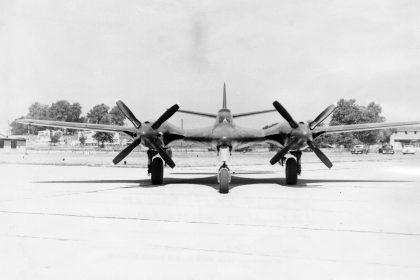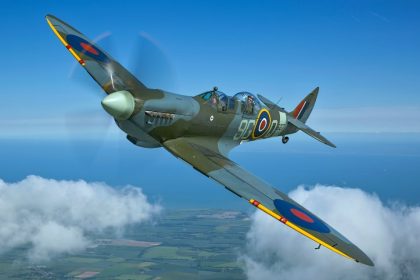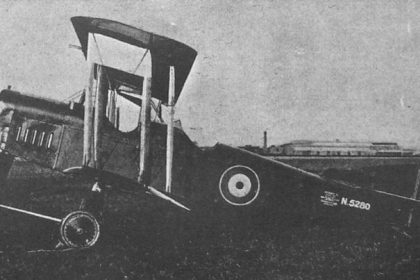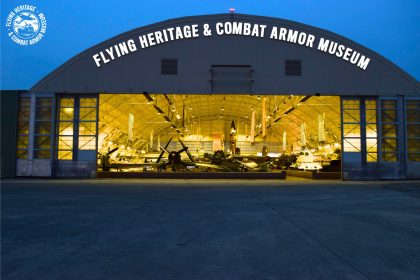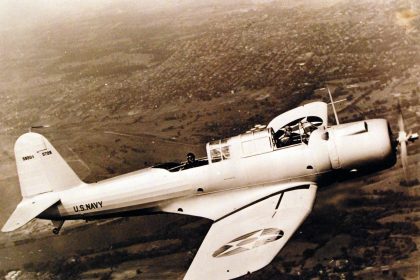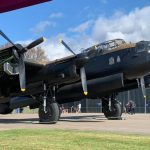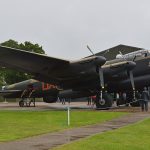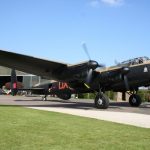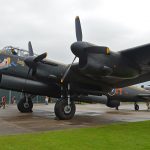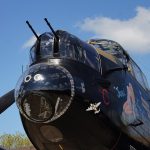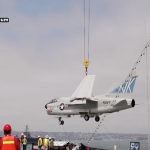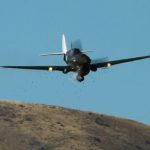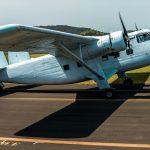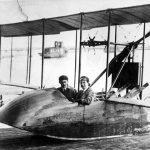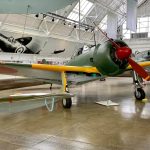As many of our readers will be well aware, Avro Lancaster B.VII NX611 Just Jane is under restoration to airworthy condition with the Lincoln Aviation Heritage Center at former RAF East Kirkby in Lincolnshire, England. Normally the restoration slows down over the summer months, as the aircraft needs to go fully back together to conduct public fast-taxi events – a source of much-needed revenue to continue the restoration – however, the team has found a remarkable solution to this dilemma in recent weeks. They worked out a deal with the South Yorkshire Air Museum who possess the rear fuselage of Lancaster B.X KB976. In return for restoring KB976’s rear fuselage to taxiable condition this summer, the team will be able to use it temporarily on NX611 for next season’s taxi runs. This will allow them to put NX611’s rear fuselage in a jig for restoration once this season concludes without any pressure to complete the whole effort before the 2022 season begins. They will also gain experience in rebuilding KB976’s fuselage which they can then translate to the airworthy restoration of NX611, so it will truly be a win-win solution for both museums! We thought that our readers might like to see a recent report on their progress, reproduced here with permission…
The Rivet Club – Newsletter 147
by Andrew Panton
Welcome to Newsletter 147,
Unbelievably another month has passed and it’s been another busy one. Since the last newsletter the team has been making great progress with all of the projects we have running.
The airworthy wing tips are still awaiting the arrival of the trailing edge sections but they are due to arrive (for the second time) next week. While Keith has been waiting for these parts, he has been able to complete the leading edge of the starboard wingtip, applying the sealant which sits between the leading edge and the forward skins. The port wingtip has had its top forward skin drilled off and it is now ready for paint. The next stage will be to fit the leading edge, but we can’t complete this until we have received the new wingtip light perspex from production. This perspex is needed in order to line up the placement of the leading edge before holes are drilled.
The team has recovered the first of the number 1 fuel tanks from the quarantine store. We removed these fuel tanks from NX611 about five years ago in order to have them overhauled, albeit when the appropriate opportunity arose. Gerbs has started the process of stripping the rubber coating from the tank. In the event a tank was punctured by bullets or flak during the war, this rubber coating was designed to react with the fuel it came in contact with, and reseal the hole… hopefully preventing further leakage and/or fire from breaking out. There are two layers of the rubber along with three layers of fabric in a sandwiched structure. The layering peels off easily enough, but the very last layer is a red adhesive substance which needs cellulose thinners to remove it. Following the removal of these outer layers, the fuel tank’s aluminium structure will be revealed; we will then conduct a thorough visual inspection and pressure test.
[wbn_ads_google_one]
Another job that Keith has been able to progress while he has been waiting for the wingtip trailing edges is to make a new skin for the spare elevator under repair. The original skin had a couple of creases/scores which needed addressing, but with its removal, some light corrosion came to light situated on the elevator torque tube where some form of repair had been attempted earlier in the aircraft’s history. Unfortunately, whomever had been in the elevator before us really hadn’t done a good job! They had removed the protective paint from the torque tube and then just brush-painted a primer onto it. The primer is porous, of course, so it allowed moisture and air to reach the underlying metal which resulted in some light corrosion. We do have a fix, however, and will be able to remove the corrosion and apply a proper layer of protective paint afterwards. Once this is done and Keith has formed the new elevator trailing edge, he can then button it all back up.
[wbn_ads_google_one]
KB976’s rear fuselage arrived last month, and we have made good progress on its restoration. John conducted a thorough survey and discovered that several important parts are missing, including the threaded inserts which sit in the tailplane mounting holes. Unfortunately, we need these to attach the fuselage to the jig, so we have contracted Eye Tech Engineering with the remanufacture of airworthy replacements to original specifications/drawings; we will later be able to use them with NX611. With the addition of these inserts, the fuselage can then be lifted into the jig.
As we waited for the threaded inserts, John and Ian started work on the rear turret mounting section; many of the parts we removed from NX611 last year can now be used on KB976. These parts include the steel turret mounting ring and the wheeled skins which fit to the rear most structure. The chance to reuse these skins both gives them a new life and saves the project further funds as we invest in KB976’s fuselage for the benefits it will give to NX611.
[wbn_ads_google_one]
Lewis has been cleaning the flying control rods in KB976’s fuselage so that we can slide them out for refurbishing.
John, Les and Ian have also started on those skin repairs which can be addressed before the rear fuselage goes in its jig.
An important process in readying the fuselage for lifting into its jig involves the attachment of the forward cruciform and the reinforcing of structural formers so that this fuselage section does not suffer further damage in the lift. Therefore John and Les have created some former spacing jigs to keep everything located where it is supposed to be. We can then use these same jigs on NX611’s rear fuselage when we start its rebuild.
As many of the stringers in KB976’s fuselage have been damaged or fitted with ‘fake’ stringers for film work, we have had to create strengthened replacement stringers. We have accomplished this by sourcing two different sizes of aluminium angle so that the smaller fits within the larger. The only problem this solution raises is at the locations where the stringer fits into the attachment ‘fingers’ at the transport joint. We solved this issue by introducing a joggle into the stringer material, as you can see in the photo below. We have therefore created a very strong stringer replacement, suitable for taxiing, without having to order the manufacture of new aviation-grade stringers. We expect to be ready to lift the fuselage into its jig in the coming days.
[wbn_ads_google_one]
We have also removed, completely dismantled and rebuilt KB976’s tail oleo beam. Unfortunately the rear fuselage must have received some significant damage even before the hangar collapsed on it back in August, 1987 because the lower angles on this beam were seriously cracked and misshapen. They obviously needed replacing, as did the top skin, which had some creasing in it.
As we progress through overhaul for all of the Lancaster’s components, we have been able to work closely with other museums and create good relationships even internationally. Indeed, we have just received a Lancaster bomb door from the South Yorkshire Air Museum and will assess its suitability for minor restoration to taxying condition and/or use to make a jig ready for NX611’s bomb door restoration work when that time arrives.
[wbn_ads_google_one]
Each step we make is a step closer to completing this incredible journey which is helping not only NX611, but a number of other Lancasters as well… We will have more news on this very soon!
Stay safe and thanks for your support!
Andrew Panton
That’s all for this particular update. We hope that you have enjoyed reading it. As can be seen, a lot of work remains to be done, but the aircraft is well on the way back to flying condition. It is being done in a methodical and careful manner in order to keep the aircraft available for ground-running operations during the summer months. For those interested in helping support this important project, please click HERE
Be sure to check out their store HERE as well… There are many cool items to buy which will help get Just Jane back in the air!





















